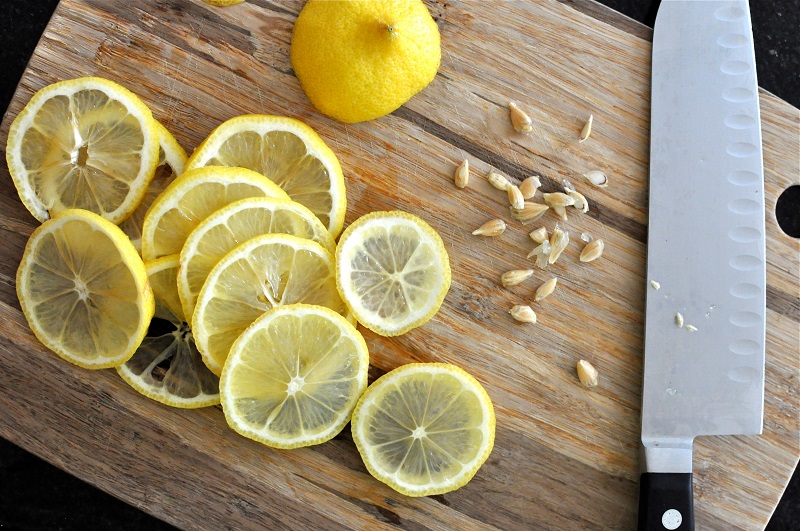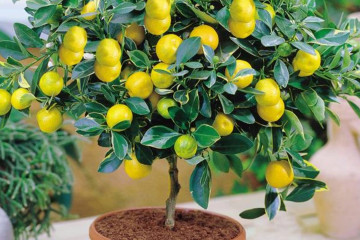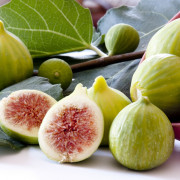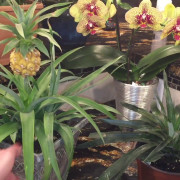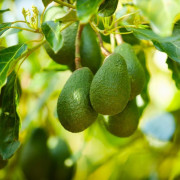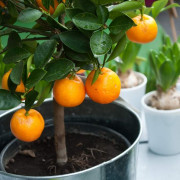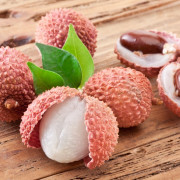How to grow a lemon tree from a seed at home
Content:
Recently, it has become popular to grow various exotic fruit trees in apartments. Such plants look unusual and decorate the interior. Some of them are even capable of bearing fruit. Among the most famous fruit trees that grow in the homes of flower lovers is the lemon tree. Before starting the cultivation of exotic plants, you should learn how to grow a lemon tree from a seed at home. The advice of experienced florists and gardeners will help you get acquainted with all the tricks and tricks.
Lemon tree in nature
The lemon tree is a resident of hot countries: India, Greece, Cyprus, Turkey. It is a hybrid representing the genus Citrus. Once upon a time, lemon originated from such a fruit as citron. In nature, the tree grows up to 6 meters in height. Bears fruit once a year. In some countries with very warm climates, lemon bears fruit twice a year.
The tree is compact, evergreen. Leaves do not fall off at the same time, but are gradually replaced by new ones. The peculiarity of the plant is in its leaf plates. They have a lemon scent, just like the fruit.
The plant is powerful, unpretentious. Lemongrass can grow even in the most unsuitable places for this. For example, next to the beach, where the soil is poor, and the sun is baking.
Seed germination
You can grow lemon at home. In this case, the tree will not be as large as in nature, but it will still bear fruit. It all starts with the germination of the seed. It is important to remember that the plant loves warmth. Therefore, a seed can only germinate in a room with a comfortable temperature.
The step-by-step process for germinating a shrub starts with the fact that drainage is placed in the prepared container, then a layer of soil. It gets hydrated. On it - seeds, which are sprinkled with 1.5-2 cm of soil substrate.
The landing is covered with foil or glass. This will create a greenhouse effect, and the sprouts will hatch faster. This will happen within 10-25 days.
How to grow a lemon tree at home? To do this, before starting to germinate a sprout, it is important to observe a number of conditions. Among them:
- choose the right fruit from which the seed is removed;
- choose a place for a sprout;
- prepare the soil substrate;
- purchase a pot.
Lemon selection
A ripe, healthy fruit is purchased in the store. It can be determined by the following criteria:
- rich yellow color;
- absence of dents, putrefactive inclusions;
- it should be elastic to the touch, not hard;
- the taste is pleasantly sour, without a bitter aftertaste.
The seed should be handled immediately after removing it from the pulp. Seeds have the ability to dry out quickly and, accordingly, to lose germination. It is best to take all the seeds that are in the fruit at once, so the chance of getting seedlings will be increased.
A place for a sprout
The pot with the mixture containing the seeds is placed in a warm place. You can place the container on the windowsill located on the south side of the house. If it is winter outside, then the container is removed closer to the windowsill. It is allowed to put it in the kitchen. However, this place will become home to lemongrass only for a while. Heat is necessary for the germination of the sprout. After the plant has stretched out, it is transplanted and placed in another place in the apartment.
Preparing the soil substrate
It is best to purchase ready-made land in a store. It should be marked "for citrus". In addition, fly ash is added to the soil. This will keep the potted lemon from getting sick.
Choice of containers
Pitted lemon is grown at home in a wide variety of pots. In order to germinate a seed, the most common plastic container or low pot is taken. Drainage holes are made in it. This is the first place of residence of a small plant. Therefore, the pot should be chosen so that it would be easy to transplant lemongrass from it later.
Inexperienced growers decide to immediately stick the seed into a large pot. They do this in order to give the rhizome space. But this is unacceptable. The fact is that if there is too much soil space, the rhizome starts active growth, forgetting to build up the upper ground part. As a result, a lemon at home in a pot does not develop properly and can quickly wither away.
Watering mode for the hatched plant
It is not difficult to grow lemon at home. The main thing is to do everything right. For example, as soon as a green stalk appeared from the ground, proper watering should be organized. The plant should not be flooded, but it is also unacceptable to leave it in dry soil.
The greenhouse film is still in place. Air the young sprout every day. Water it every 2 days. It is imperative that settled filtered water is used.
Many do not know what a lemon sprout looks like. At first, it is only an elongated green shoot, resembling a thin blade of grass. Then leaves appear on it. When the sprout reaches a size of 3-4 cm, it already has 2-3 strong elastic leaves. The color of the leaf plates is emerald. The surface is glossy. You can plant the bushes a month after planting.
Seedling sprout temperature
Lemon sprout needs not only warmth, but also the absence of drafts, sudden coolness. The optimum temperature for a newly hatched seedling sprout is about + 27 ... + 30 degrees. It is provided by a glass cover or a bag draped over the container.
For a decent growth of a young plant, which has already been released from the package, the temperature should be at + 22 ... + 25 degrees.
The temperature for sufficient development of the seedling sprout is higher than for an adult indoor lemon. An adult plant feels good at + 17 ... + 22 degrees.
Decorative properties of the lemon bush
The home tree has a very decorative look. For the crown, it is allowed to perform formative pruning. A lush bush can be turned into a sophisticated green ball.
The lemon shrub is especially beautiful when the snow-white flowers bloom on it.Each flower has elongated petals and smells good, after which lemons are poured on the branches.
Conditions for active plant growth
Homemade lemon how to care? Growing a beautiful lemon bush is impossible without proper care. It is not enough just to plant a seed, the plant must be maintained for its entire long life. Lemons are long-lived. They can grow for three decades. Lemon care includes:
- choice of a comfortable place;
- watering;
- pruning;
- fertilization;
- organization of wet cleansing procedures.
They try to place a tub with an adult tree in a lighted place. It is allowed to place it on the floor not far from a window facing south.
Watering is organized as needed, approximately 1-2 times a week. Like all exotics from warm countries, lemon loves moderately moist soil. If water remains in the pan, it is drained. This will prevent root rot.
They try to carry out formative pruning from the first year of life. If the goal is to get fruit, then pruning is replaced by pinching the apical point of the main trunk and side branches. If the cultivation of a tree is only aesthetic in nature, then there is one rule - the branches are cut in such a way that a neat crown is formed, for example, in the form of a ball or rectangle.
Fertilization starts as soon as the first leaves of the sprout appear, and continues continuously. Complex mixtures are introduced, organics are allowed. These substances are introduced separately from each other. Fertilize the planting every 2-4 months. In winter, this procedure is abandoned.
Fruiting
Some exotic lovers may face such a problem as the lack of fruiting in a lemon bush. Perhaps we should just wait. The first flowering and fruiting of an ornamental tree at home can occur 4-6 years after planting. However, there is a way that will significantly speed up this process. It's about grafting lemongrass.
How to vaccinate lemon
Lemon grafting is practically a surgical procedure. It requires experience, as well as the necessary tools and prepared material, which will allow you to correctly graft the plant.
Experienced flower growers advise, before planting a lemon, to prepare a scion and stock. The stock can be a young lemon shrub, which is still far from flowering. It is allowed to take a cultivated orange tree as a stock. A graft is necessarily an outgrowth of a tree that is already bearing fruit. You also need a sharp knife, treated with alcohol.
There are two ways to get vaccinated:
- Copulation. In this case, someone else's stalk is grafted onto the trunk.
- Budding. Here, one living bud from a fruiting bush is attached to the trunk and fixed.
Growing a lemon at home is within the power of both a novice florist and an experienced one. Among the important agrotechnical rules is the planting of only fresh seeds taken from the ripe fruit, competent care for the sprout, and then for the adult plant. It should be remembered that an exotic perennial does not like drafts and is afraid of the cold.

